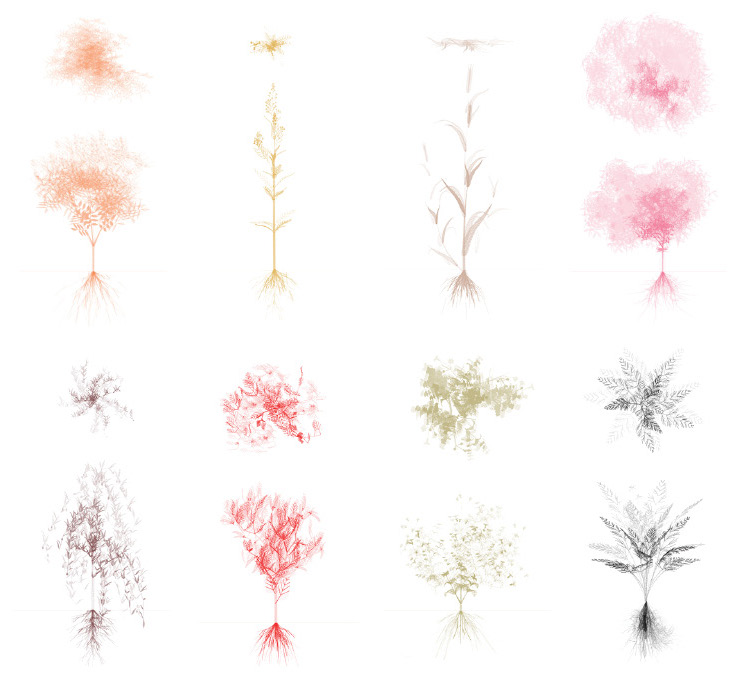#Data-driven #GenerativeDesgin #C# #Grasshopper #DataVisualization
Generative Structure
; generating building and plant structure
Office for Urbanization + Certain Measures | 2019
Supervisors: Charles Waldheim, Andrew Witt
Role: Machine Training, Data Visualization
Tools: Rhino, Grasshopper(C#), pix2pix
Publication: 50 New Town (in progress)
This work presents collaborative design research examining Chinese agrarian village block typologies,
augmented through computational processes and artificial intelligence (AI) classifications.
# Building Structure: How it works
For 18 building typology, from 18 different 10km x 10km region

- We trained the model to detect certain typologies using pix2pix.
-
We got the extracted boundaries of detected buildings matched with the trained typology.
-
We generated about 100 deep structures associated with each typology for training use.
-
We trained another model with the generated deep structure.
-
We got the generated deep structure from the extracted boundaries (from the 2nd process).
# Building Structure: Visualization
The generated deep structure elements were arranged according to their orientation and size.

# Plant Structure: How it works
The growth pattern became their language, and we interpreted 50 new towns with this logic. 3d tree models were generated based on their specific growth pattern.
With C# in Grasshopper, I built a 3D tree model generator that takes a few variables for the leaf shape and their attached pattern.
 Tree growth logic
Tree growth logic Grasshopper script with C# code
Grasshopper script with C# code


 The growth patterns translated into computational language
The growth patterns translated into computational language# Plant Structure: 3d models
 Examples of generated tree drawings
Examples of generated tree drawings  3d model of Jasmine in three different stages
3d model of Jasmine in three different stages